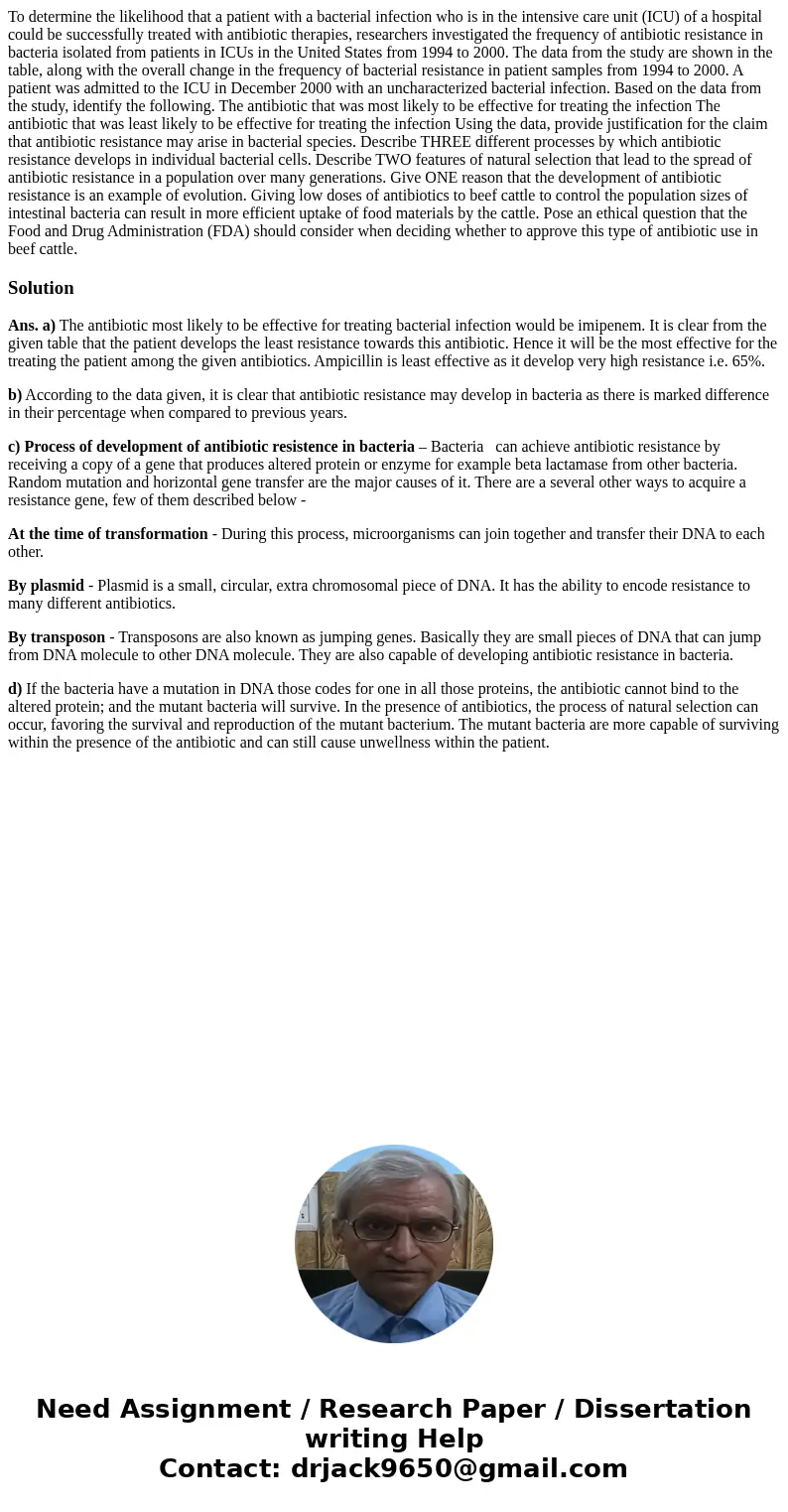To determine the likelihood that a patient with a bacterial
Solution
Ans. a) The antibiotic most likely to be effective for treating bacterial infection would be imipenem. It is clear from the given table that the patient develops the least resistance towards this antibiotic. Hence it will be the most effective for the treating the patient among the given antibiotics. Ampicillin is least effective as it develop very high resistance i.e. 65%.
b) According to the data given, it is clear that antibiotic resistance may develop in bacteria as there is marked difference in their percentage when compared to previous years.
c) Process of development of antibiotic resistence in bacteria – Bacteria can achieve antibiotic resistance by receiving a copy of a gene that produces altered protein or enzyme for example beta lactamase from other bacteria. Random mutation and horizontal gene transfer are the major causes of it. There are a several other ways to acquire a resistance gene, few of them described below -
At the time of transformation - During this process, microorganisms can join together and transfer their DNA to each other.
By plasmid - Plasmid is a small, circular, extra chromosomal piece of DNA. It has the ability to encode resistance to many different antibiotics.
By transposon - Transposons are also known as jumping genes. Basically they are small pieces of DNA that can jump from DNA molecule to other DNA molecule. They are also capable of developing antibiotic resistance in bacteria.
d) If the bacteria have a mutation in DNA those codes for one in all those proteins, the antibiotic cannot bind to the altered protein; and the mutant bacteria will survive. In the presence of antibiotics, the process of natural selection can occur, favoring the survival and reproduction of the mutant bacterium. The mutant bacteria are more capable of surviving within the presence of the antibiotic and can still cause unwellness within the patient.

 Homework Sourse
Homework Sourse